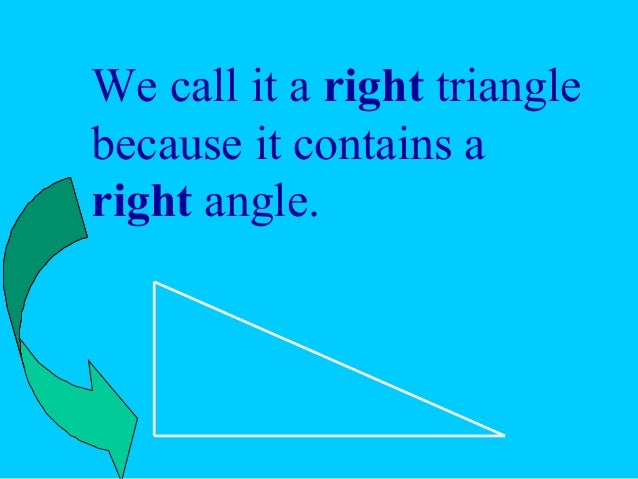Pythagoras Theorem Presentation
PowerPoint Presentation: Theorem states that: 'The area of the square built upon the hypotenuse of a right triangle is equal to the sum of the areas of the squares upon the remaining sides.' The Pythagorean Theorem asserts that for a right triangle, the square of the hypotenuse is equal to the sum of the squares of the other two sides: a 2 + b 2 = c 2 The figure above at the right is a visual display of the theorem's conclusion. The figure at the left contains a proof of the theorem, because the area of the big, outer, green square is equal to the sum of the areas of the four red triangles and the little, inner white square: c 2 = 4(ab/2) + (a - b) 2 = 2ab + (a 2 - 2ab + b 2 ) = a 2 + b 2. PowerPoint Presentation: Animated Proof of the Pythagoras Theorem Below is an animated proof of the Pythagoras Theorem. Starting with a right triangle and squares on each side, the middle size square is cut into congruent quadrilaterals (the cuts through the center and parallel to the sides of the biggest square). Then the quadrilaterals are hinged and rotated and shifted to the big square. Finally the smallest square is translated to cover the remaining middle part of the biggest square.
A perfect fit! Thus the sum of the squares on the smaller two sides equals the square on the biggest side. Afterward, the small square is translated back and the four quadrilaterals are directly translated back to their original position. The process is repeated forever. PowerPoint Presentation: Pythagoras Theorem Over 2,500 years ago, a Greek mathematician named Pythagoras developed a proof that the relationship between the hypotenuse and the legs is true for all right triangles.

In any right triangle, the square of the length of the hypotenuse is equal to the sum of the squares of the lengths of the legs.' This relationship can be stated as: a 2 + b 2 = c 2 and is known as the Pythagoras Theorem a, b are legs. C is the hypotenuse (across from the right angle). There are certain sets of numbers that have a very special property. Not only do these numbers satisfy the Pythagoras Theorem, but any multiples of these numbers also satisfy the Pythagoras Theorem For example: the numbers 3, 4, and 5 satisfy the Pythagoras Theorem.
Pythagorean Theorem Presentation


If you multiply all three numbers by 2 (6, 8, and 10), these new numbers ALSO satisfy the Pythagoras theorem. Pythagoras Theorem in text book of 10th class Given:- ABC is a right angle Triangle. Angle B =900 R.T.P:- AC2 = AB2 +BC2 Construction:- To draw BD AC.: Pythagoras Theorem in text book of 10 th class Given:- ABC is a right angle Triangle. Angle B =90 0 R.T.P:- AC 2 = AB 2 +BC 2 Construction:- To draw BD AC. A B C D Proof:- In Triangles ADB and ABC AngleA=Angle A (common) Angle ADB=Angle ABC (each 90 0 ) ADB ABC ( A.A corollary ) So that AD/AB=AB/AC (In similar triangles corresponding sides are proportional ) AB 2 = AD X AC (1) Similarly BC 2 = DCXAC (2) Adding (1)&(2) we get AB 2 +BC 2 = AD X AC + DCXAC = AC (AD +DC) = AC.
Pythagoras Theorem Quiz
AC =AC 2S There fore AB 2 +BC 2 =AC 2.
Comments are closed.
